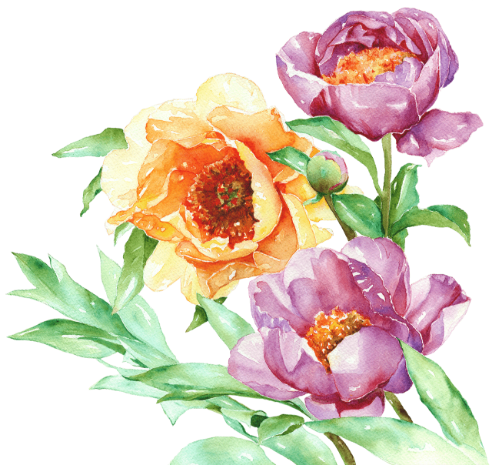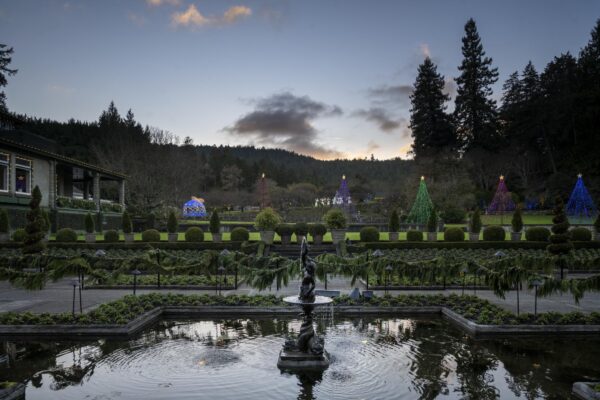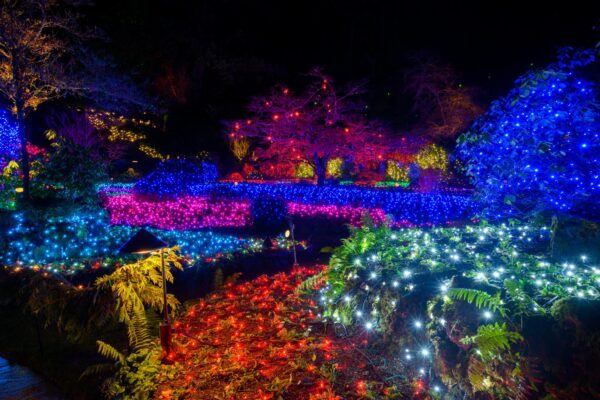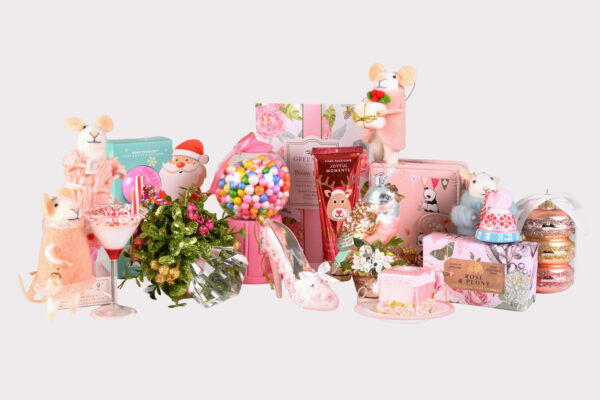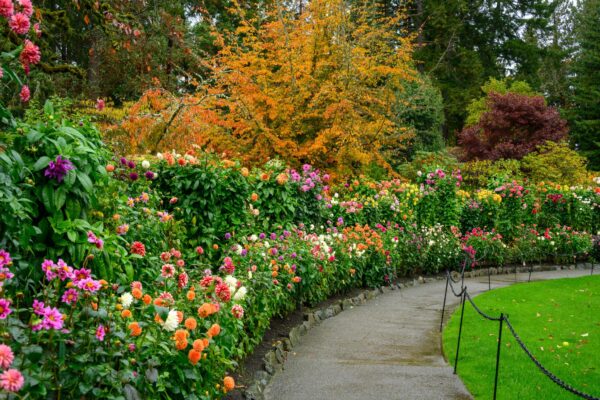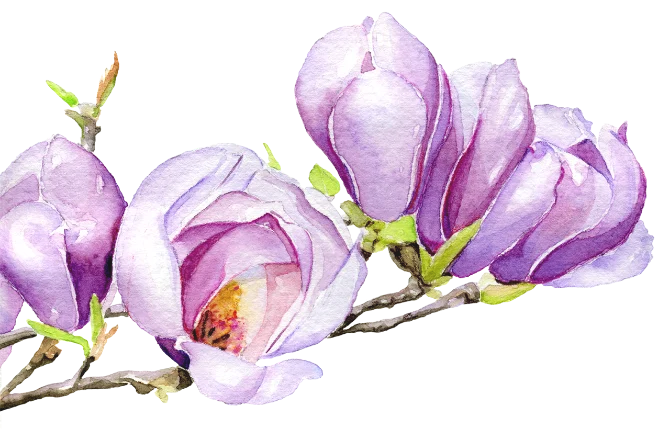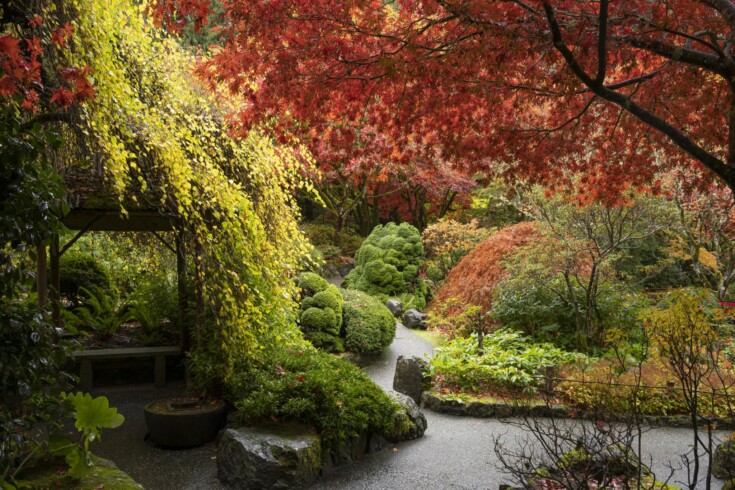
Autumn Garden Insight 2023
With the distinct change of colour in the leaves of many deciduous plants, we can clearly see that autumn has arrived. The warm autumn glow radiating from The Gardens is nature’s way of signalling the change of seasons, and nothing says “autumn is here” more than the feel of cool crisp air on your skin along with sparkling dew that coats the lawns. Winding your way down the pathways you are sure to be fascinated by gorgeous scenery throughout The Gardens.
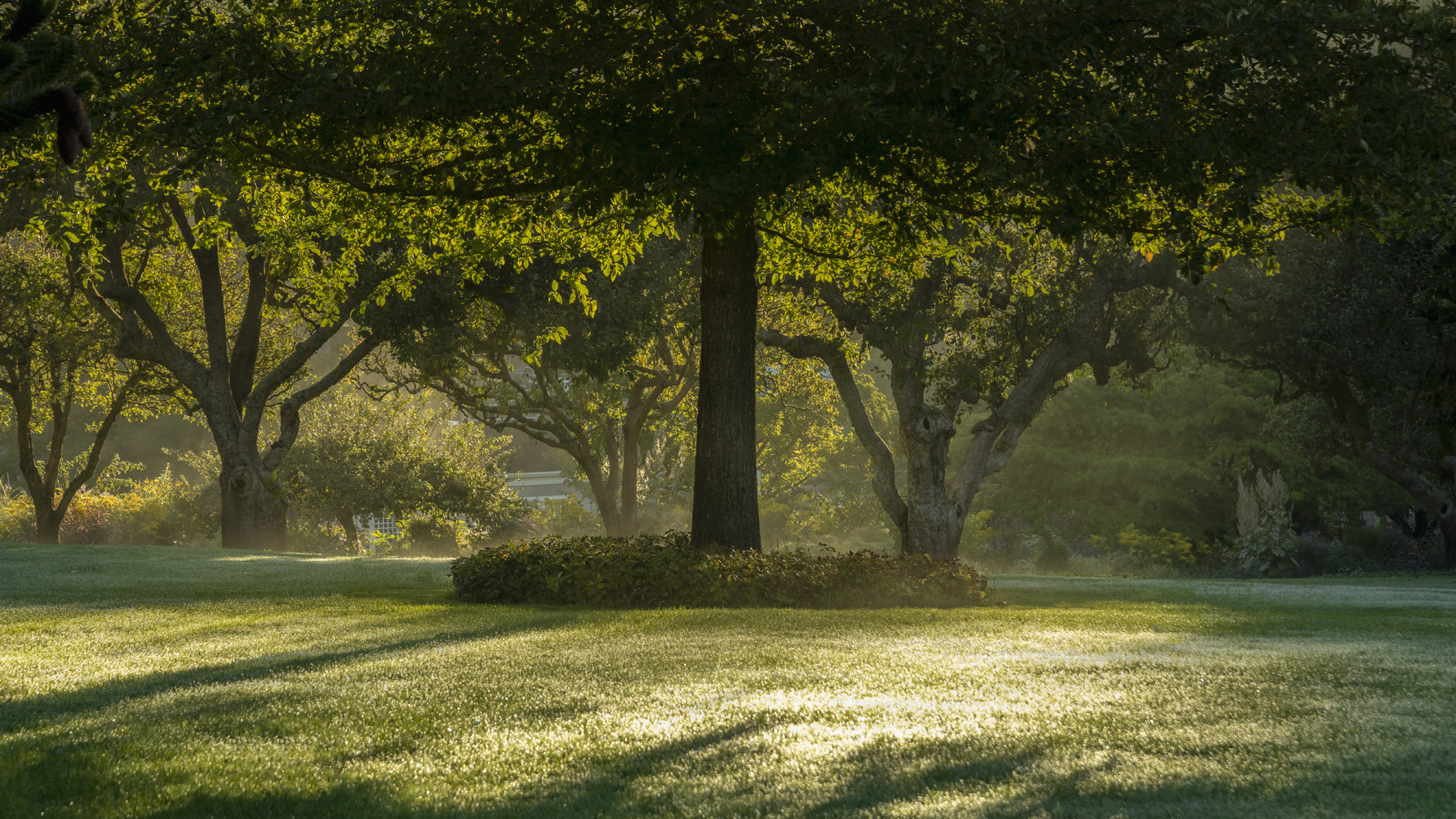
Autumn officially begins in late September but we often see subtle hints of fall in early September. One of the first things that we notice is the hints of colour beginning to develop in the Acer (Japanese maple) trees. These colours include brilliant scarlet, burnt orange, and golden yellow. There are Japanese maple trees located throughout The Gardens, but to truly appreciate our immense Japanese maple collection I suggest that you visit The Japanese Garden. The emerald green moss that covers much of the garden floor accentuates the vibrant colours in the trees.
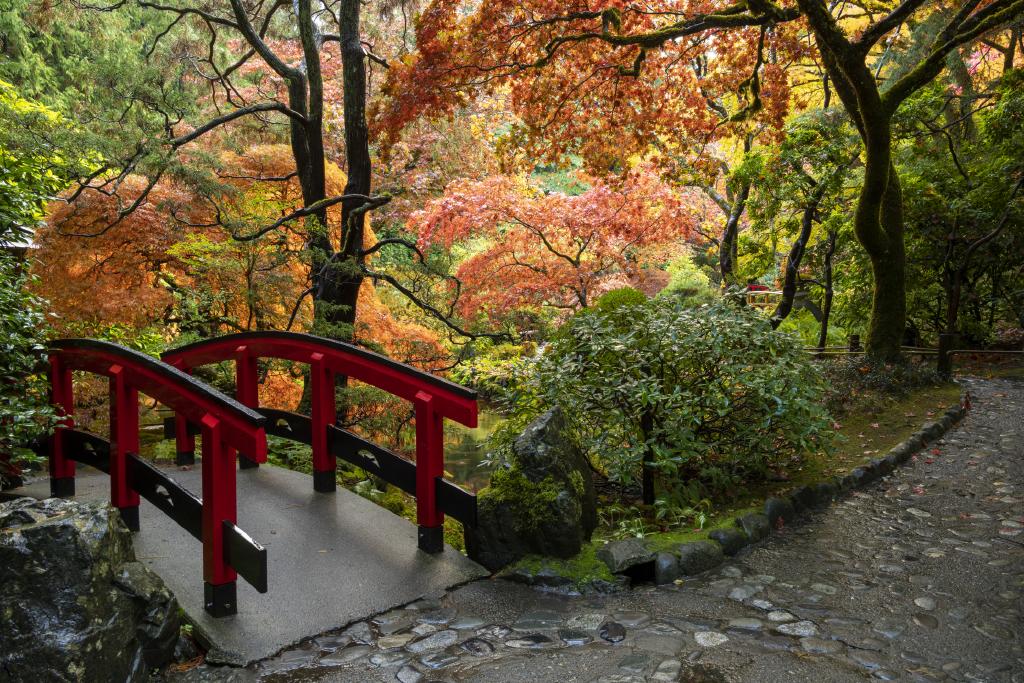
There are incredibly attractive plants to be admired right now in The Gardens, especially during early autumn. Nestled within the fall foliage these gems are sure to attract some attention, the shorter days, longer nights, and cooler temperatures are exactly what these plants prefer. I have listed a few of my personal autumn favorites below, but there is one tree in particular that I find stunning, and this is the Heptacodium miconioides (Seven–son flower). With its creamy white fragrant flowers, this tree is sure to impress! There are a few Heptacodium miconioides in our collection and the two most visible trees are growing on either side of the Star Pond.

- Heptacodium miconioides (Seven–son flower)
- Aster (Michaelmas daisy)
- Helianthus (Perennial sunflower)
- Dahlia
- Lagerstroemeria (Crape myrtle)
- Tibouchina (Glory bush)
- Callicarpa (Beautyberry)
- Chrysanthemum
- Justicia (Shrimp plant)
- Iochroma
- Clerodendrum trichotomum (Glory bower)
- Colchium (Autumn crocus)
- Rudbeckia (Gloriosa daisy)
- Sedum (Stonecrop)
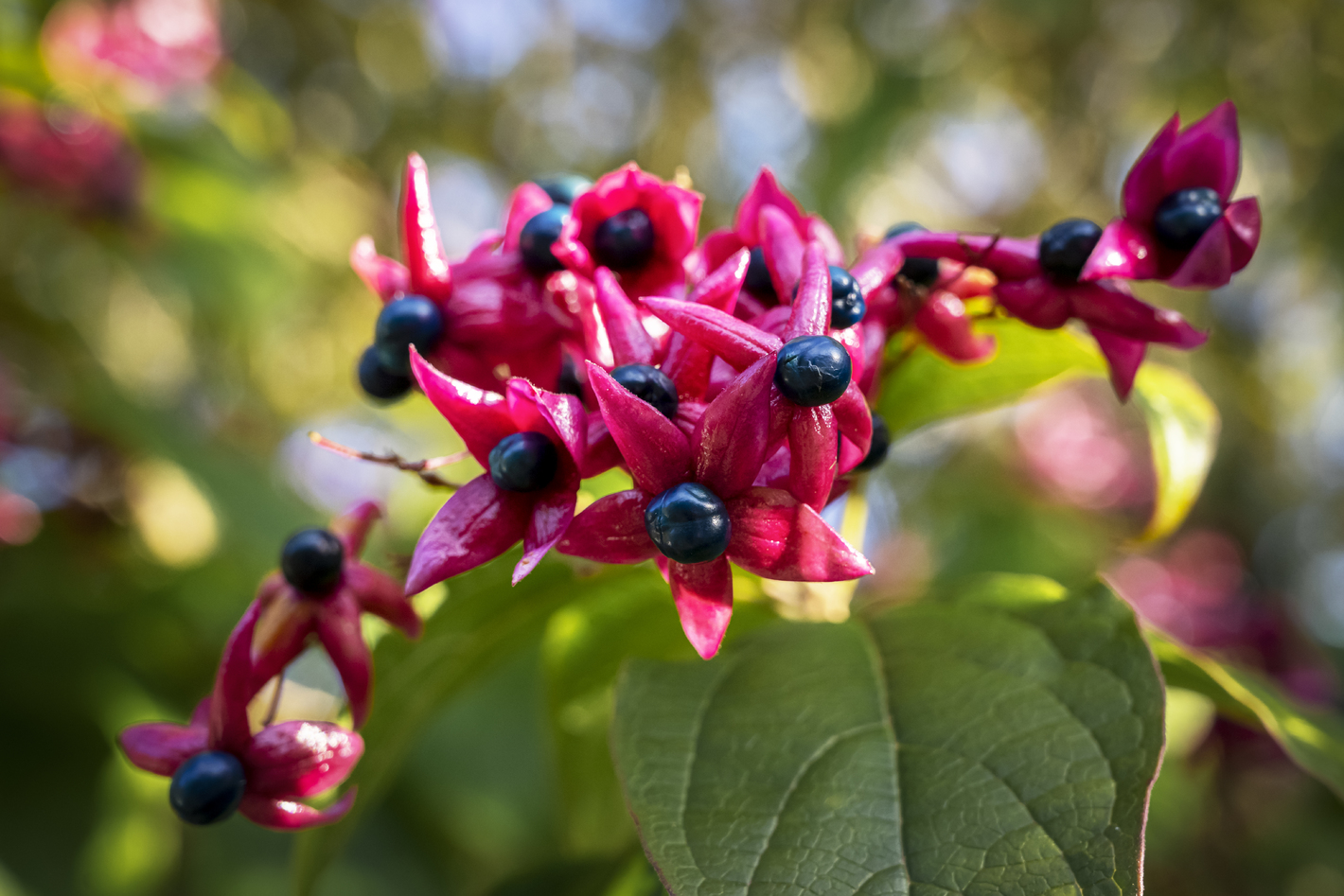
After a warm and dry summer, the autumn rains are a much welcome sight, not only to garden enthusiasts but also to the plants. It takes many good rainfalls for the soil to properly absorb moisture after a dry summer season. The water we receive from rain is quite different from our irrigation water and benefits the plants in many ways; rainwater contains nitrate – the most bioavailable form of nitrogen, and it is naturally slightly acidic which most plants prefer. Speaking of rain, we are pleased with the measures that we have been working on in order to reduce water consumption, e.g. adding organic matter to our soil, paying close attention to the timing of our irrigation, mulching, and increasing shade to the soil by planting densely. These examples can be implemented by anyone and can foster a garden that requires far less water. Over time this can lead to large savings to one’s pocket book, but even more importantly it can help reduce the demands from our local water supply.
The precipitation that we are so thankful to see also poses a challenge to our summer annuals, especially at the tail end of the season. Cool wet conditions can be a spawning ground for disease and these conditions are not ideal for summer annuals. Gardening staff work hard to prolong the summer season by performing tedious work like deadheading, pruning, and cleaning up dead foliage to keep the show going. Regardless of how much work our gardening staff do to try to extend their season, some flowers cannot be saved, and therefore need to be replanted.
The Dahlias, on the other hand, are thriving during this change of seasons. A lot of work goes into planning, growing, and maintaining the Dahlias so it’s always a welcome sight to see them drawing plenty of attention in September. This has been an exceptional year for the Dahlias, and one Dahlia in particular is almost 9 feet tall! Not only do the Dahlias catch the attention of our visitors, but they are a hit amongst our bee population. Each week during the summer, gardening staff deadhead, removing the spent blooms from the Dahlias to promote continuous flowering. While staff are deadheading they are also tasked with relocating sleeping bees! I couldn’t believe my eyes when I witnessed this for the first time this summer. Apparently, Dahlia flowers provide a comfortable place to nestle down for the night, and in order to continue on with their jobs, staff manually move the bees to other flowers as they cut the spent blooms. This is satisfying work knowing that these small steps are helping the native bee population.
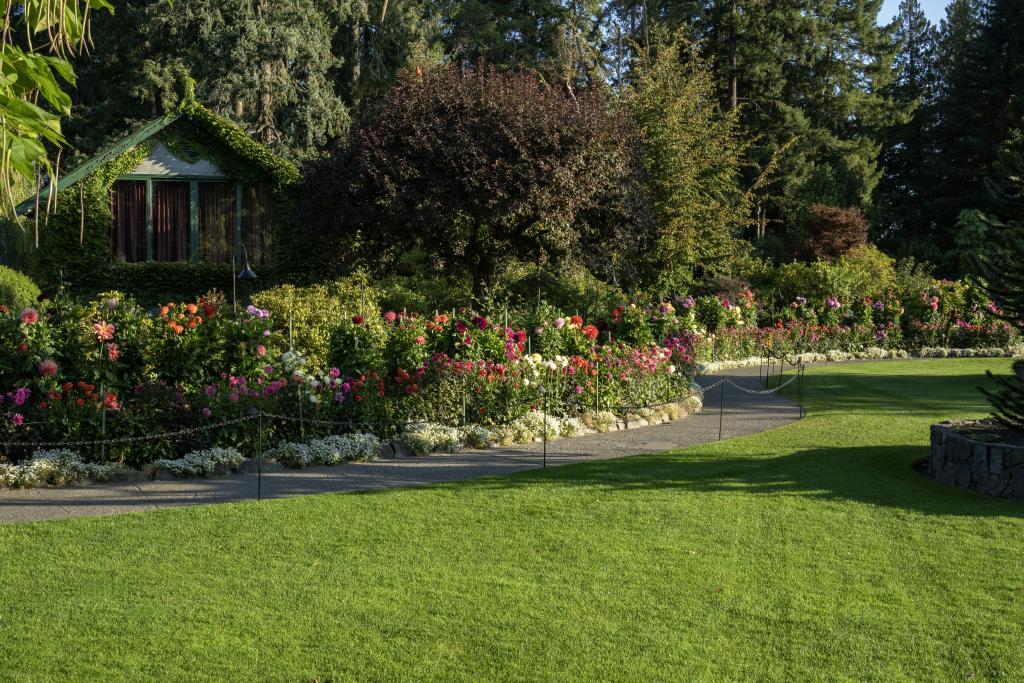
Early preparations are underway to transition the garden from a summer display into an autumn display. Some obvious signs that autumn has arrived are the thousands of Chrysanthemums planted and displayed throughout The Gardens, and they complement the surrounding landscape by adding a pop of colour. This is not an easy job, each and every plant is hand dug from our nursery, loaded on a vehicle, and then transported and planted in a predetermined location. As mentioned earlier, flower beds that have begun to change over provide wonderful locations to plant the Chrysanthemums. The thousands of Chrysanthemums that we plant arrive as rooted cuttings early in the summer, and soon after their arrival, they are hand planted directly in the nursery fields.
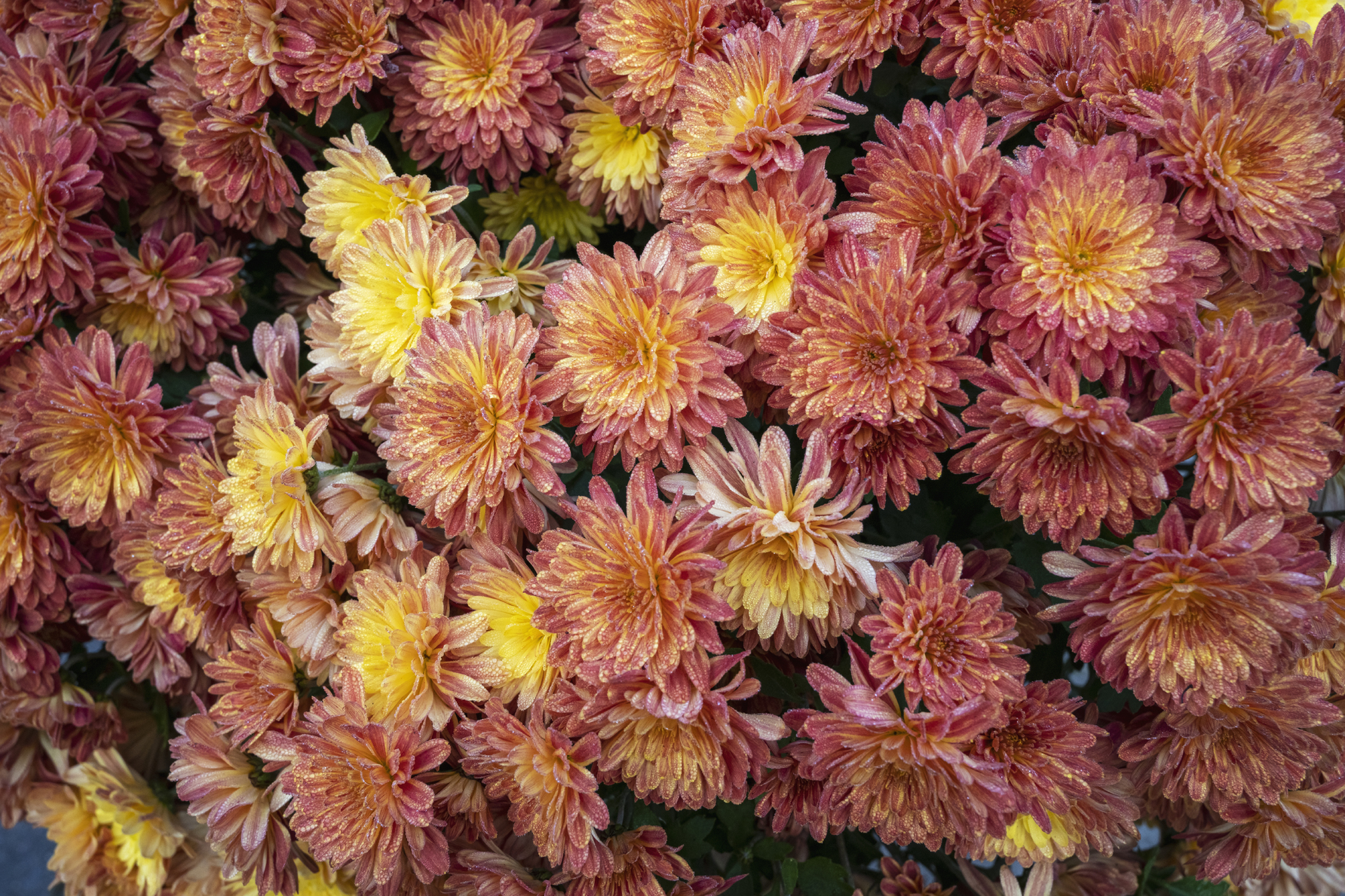
Our horticulture team is continuously looking at new and innovative ways to improve our floral displays. It typically starts with one idea that turns into a plan, and that plan is then set into motion. This year we planted a Helianthus (Sunflower) field in our seed field using a select variety of sunflower seeds – Sunflowers are often thought of as a summer flower, but they flower through until early autumn. The location that we selected for this particular project is a field that would have been growing a cover crop, typically a less attractive display. Not only are the Sunflowers a spectacular sight for everyone exiting The Gardens, but they are incredible pollinators. Sunflowers are tall and brightly coloured which attract pollinators from a great distance away, and their large flowers provide a large piece of real estate to perch on and feed. While exiting The Gardens be sure to admire the Sunflowers on the left-hand side of the Exit Road.

There is no better way to experience autumn than by putting on a warm coat, grabbing a warm beverage from our coffee shop, and taking a walk through our beautiful gardens. I hope that after reading this blog you will be inspired to visit The Butchart Gardens this autumn season.


